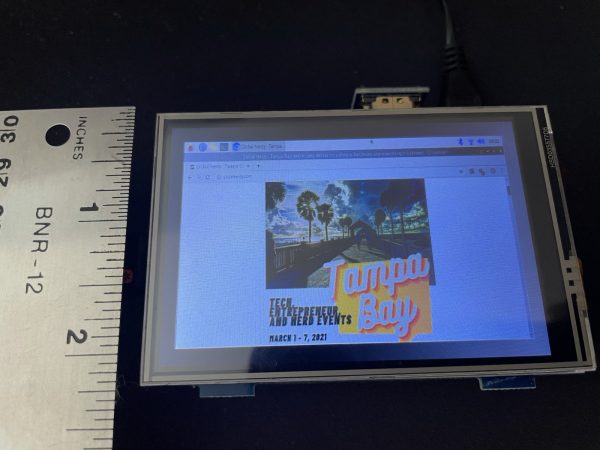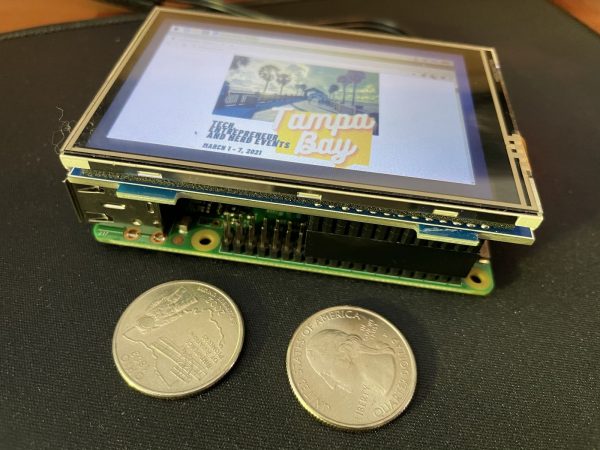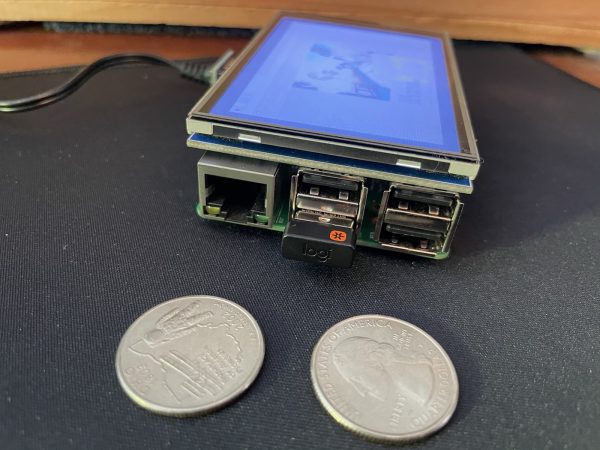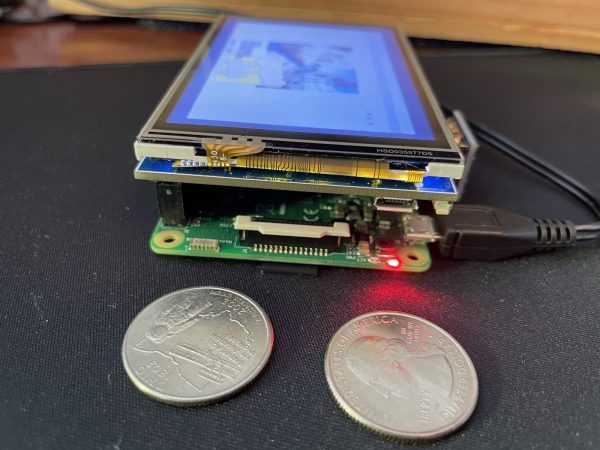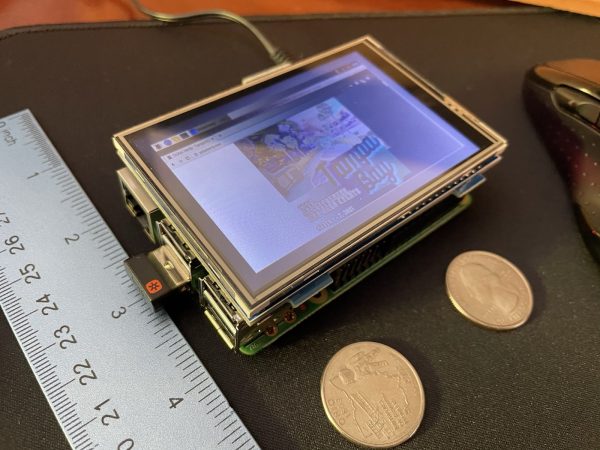
Welcome to the week with the Ides of March and St. Patrick’s Day! Here’s your list of tech, entrepreneur, and nerd events for Tampa Bay and surrounding areas for the week of Monday, March 15 through Sunday, March 21, 2020.
This is a weekly service from Tampa Bay’s tech blog, Global Nerdy! For the past four years, I’ve been compiling a list of tech, entrepreneur, and nerd events happening in Tampa Bat and surrounding areas. There’s a lot going on in our scene here in “The Other Bay Area, on the Other West Coast”!
By “Tampa Bay and surrounding areas”, this list covers events that originate or are aimed at the area within 100 miles of the Port of Tampa. At the very least, that includes the cities of Tampa, St. Petersburg, and Clearwater, but as far north as Ocala, as far south as Fort Myers, and includes Orlando and its surrounding cities.
For the time being, I’m restricting this list to online events. We’re still deep in a pandemic, and the way out is to stop the spread, however we can. In the age of broadband internet, smartphones, and social media, it’s not that hard. Stay home, stay safe, stay connected, and #MakeItTampaBay!
This week’s events
Monday, March 15
- Tampa Bay Tech Career Advice Forum — Job Seeker Coffee Talk @ 9:00 AM to 10:00 AM EDT
- Christian Professionals Network Tampa Bay — Live Online Networking- Monday @ 11:30 AM to 1:00 PM EDT
- Coaching for Everyone: Sarasota-Manatee — GSCA March 15th “Virtual” Meeting @ 11:30 AM to 1:00 PM EDT
- Professional Business Networking with RGAnetwork.net — Tampa Bay Virtual Networking Lunch Monday & Wednesday All Welcome JOIN us @ 11:30 AM to 1:00 PM EDT
- Jira on Agile Project Management — Jira on Agile Project Management @ 1:00 PM to 2:00 PM EDT
- Tampa Bay Investors & Traders — Stocktwits Meetups — Winning Wall Street’s Money with Stocks, Options, Futures, Forex, Crypto, etc @ 1:00 PM to 3:00 PM EDT
- Orlando Lady Developers Meetup — [TENTATIVE EVENT] training event with local Orlando nonprofit @ 3:00 PM to 5:00 PM EDT
- Toastmasters Division G — Triple Crown Toastmasters Club 4147 (Virtual) @ 6:30 PM to 7:30 PM EDT
- Tampa Bay DevOps Meetup — TBDevOps monthly meeting @ 6:30 PM to 8:30 PM EDT
- Library Book Clubs – OCLS — Virtual Event: Hiawassee Book Club @ 7:00 PM to 8:00 PM EDT
- Orlando Stoics — Comparing Stoic Philosophy and CBT (Part 1) + After Party @ 7:00 PM to 8:30 PM EDT
- Toastmasters District 48 — Beam Into Our Awe Inspiring Universe Monday’s for Intellectual Stimulation & Fun @ 7:00 PM to 8:15 PM EDT
- Toastmasters, Division D — ACE Advanced Toastmasters 3274480 @ 7:00 PM to 8:30 PM EDT
- Toastmasters Division E — Lakeland (FL) Toastmasters Club #2262 @ 7:00 PM to 8:30 PM EDT
- Toastmasters District 84 — Toastmasters Bi-Monthly Forum: @ 8:00 PM to 9:00 PM EDT
- Sunshine State Startup: Idea to IPO — FREE! Computer Architecture Top-To-Bottom @ 8:00 PM to 9:00 PM EDT
Tuesday, March 16
- Tampa Bay Agile — v-Lean Coffee @ 7:30 AM to 8:30 AM EDT
- Write the Docs Florida — Morning social @ 8:30 AM to 10:00 AM EDT
- Tampa Bay Tech Career Advice Forum — Virtual Networking Success @ 10:00 AM to 11:30 AM EDT
- Toastmasters District 48 — Westshore Toastmasters @ 12:00 PM to 1:00 PM EDT
- Tech4Good Tampa — Crash Course on Google Analytics (Webinar) @ 12:00 PM to 12:45 PM EDT
- Free Video Production Classes – TV/Internet — Social Video Marketing Tips(ONLINE CLASS)-FREE for Hillsborough County Residents @ 4:15 PM to 5:15 PM EDT
- Tampa SQL User Groups — Pinellas – Monthly Meeting @ 6:00 PM to 9:00 PM EDT
- Tampa Hackerspace — Online Weekly Open Make Night @ 6:00 PM to 10:00 PM EDT
- Suncoast Developers Guild — WordPress St. Pete at SDG @ 6:30 PM to 8:30 PM EDT
- Orlando Adventurer’s Guild — Icewind Dale: Rime of the Frostmaiden – (Tier 1, APL 1) – DM Canon @ 7:00 PM to 11:00 PM EDT
- Tampa Bay Coalition of Reason — Online: Tampa Bay Technology Center (TBTC): Learn how to sell on eBay & Amazon @ 7:00 PM to 9:00 PM EDT
- Tampa Bay Investors & Traders — Stocktwits Meetups — Winning Wall Street’s Money with Stocks, Options, Futures, Forex, Crypto, etc @ 7:00 PM to 9:00 PM EDT
- Tampa Bay Technology Center — Learn how to sell on eBay and Amazon @ 7:00 PM to 9:00 PM EDT
- Brandon Boardgamers — Board Gaming – ONLINE ONLY @ 7:00 PM to 9:00 PM EDT
- Central Florida Philosophy Meetup — Making Sense of Kant’s Highest Good @ 7:00 PM to 9:00 PM EDT
- Shut Up & Write!® Tampa — Online Event: Shut Up & Write on Zoom @ 7:45 PM to 9:15 PM EDT
- Tampa Wealth Factory — THE REAL HIDDEN POWERS OF LLC’S THAT WILL SAVE YOU THOUSANDS! @ 8:00 PM to 10:00 PM EDT
- Tampa Entrepreneurs Network — Become a TEDx speaker & watch your credibility & client base soar | Roger Killen @ 8:00 PM to 10:00 PM EDT
- Thinkful Tampa | Careers in Tech — Thinkful Webinar | Data Science Fundamentals: The Pandas Library @ 9:00 PM to 11:00 PM EDT
Wednesday, March 17
- North Tampa Networking Group — Business networking @ 9:00 AM to 10:00 AM EDT
- 1 Million Cups – Orlando — 1 Million Cups – Orlando Weekly Meetup @ 9:00 AM to 10:00 AM EDT
- Professional Business Networking with RGAnetwork.net — Tampa Bay Virtual Networking Lunch Monday & Wednesday All Welcome JOIN us @ 11:30 AM to 1:00 PM EDT
- Wesley Chapel, Trinity, New Tampa Business Professionals — Lutz, Wesley Chapel, New Tampa Virtual Networking Lunch @ 11:30 AM to 1:00 PM EDT
- Success Strategies for Business Owners — Understanding Financial Statements and Sustainability @ 12:00 PM to 2:00 PM EDT
- Orlando Machine Learning and Data Science — OMLDS Lunch and Learn @ 12:00 PM to 1:00 PM EDT
- Tampa Bay Agile — Heart of Agile Weekly Coffee Corner @ 12:30 PM to 1:45 PM EDT
- Tampa Bay Investors & Traders — Stocktwits Meetups — Winning Wall Street’s Money with Stocks, Options, Futures, Forex, Crypto, etc @ 1:00 PM to 3:00 PM EDT
- Free Video Production Classes – TV/Internet — Digital Video Editing Class (ONLINE CLASS) -FREE for Hillsborough residents only @ 1:00 PM to 3:00 PM EDT
- Christian Professionals Network Tampa Bay — Online Networking 3rd. Wednesday @ 1:30 PM to 3:00 PM EDT
- Tampa Bay DevOps — Tampa Bay DevOps – Thriving in the Cloud with HashiCorp Terraform and Vault @ 4:30 PM to 6:00 PM EDT
- Orlando Adventurer’s Guild — Tales from the Yawning Portal: Tomb of Horrors – Session 2 (Tier 3 APL13) @ 6:30 PM to 9:30 PM EDT
- Tampa Hackerspace — 3D Printing Orientation: Models and Slicers @ 7:00 PM to 9:00 PM EDT
- Orlando 3D Printing Meetup — 3rd Wednesdays: 3D Printing Hangout & Factory Tour @ 7:00 PM to 9:00 PM EDT
- MakerFX Makerspace — Orlando 3D Printing Meetup @ 7:00 PM to 9:00 PM EDT
- Business Ballers — Be a business baller – excellerte your business now @ 7:00 PM to 8:30 PM EDT
- Toastmasters District 48 — Carrollwood Toastmasters Meetings now conducted Online using Zoom @ 7:00 PM to 8:30 PM EDT
- Central Florida AD&D (1st ed.) Grognards Guild — New Beginnings & Old Rivalries @ 7:00 PM to 10:30 PM EDT
- Nerdbrew Events — Sarah’s Arts Crafts and Bad TV Hangout Night @ 8:00 PM to 12:00 midnight EDT
- Sunshine State Startup: Idea to IPO — FREE! Intro To API’s @ 8:30 PM to 10:30 PM EDT
Thursday, March 18
- BNI Dealmakers – South Tampa — BNI Dealmakers of South Tampa @ 7:15 AM to 9:00 AM EDT
- Uptown Biz Pros — Build your business with Biz Pros @ 8:30 AM to 10:00 AM EDT
- Tampa Bay Tech Career Advice Forum — The Job Seekers Lunch Hour @ 12:00 PM to 1:00 PM EDT
- “Learn and Earn” Millionaire Mind Secrets & Networking — Online Zoom! Millionaire Mind Lunch; Book Club and Networking! @ 12:00 PM to 1:00 PM EDT
- Tampa Bay Investors & Traders — Stocktwits Meetups — Winning Wall Street’s Money with Stocks, Options, Futures, Forex, Crypto, etc @ 1:00 PM to 3:00 PM EDT
- Free Video Production Classes – TV/Internet — YouTube Basics (ONLINE CLASS) – FREE for Hillsborough County Residents @ 3:00 PM to 4:00 PM EDT
- We Write Here Black and Women of Color Writing Group — Virtual Writing Get Downs @ 6:00 PM to 8:30 PM EDT
- Entrepreneur Social Club — Entrepreneur Social Club at ZOOM Meeting @ 6:00 PM to 8:00 PM EDT
- Tampa Bay Agile — Lean Beer for All Things Agile (Tampa) @ 6:00 PM to 7:30 PM EDT
- Tampa Bay AWS User Group — AWS Observability Services – Imaya Kumar Jagannathan @ 6:00 PM to 7:30 PM EDT
- West Orlando WordPress Meetup — WordPress Security Issues and Solutions @ 6:00 PM to 7:00 PM EDT
- Tampa SEO & Internet Marketing Meetup with Steve Scott — Optimizing Your Site For “Near Me” Online Searches @ 6:00 PM to 8:00 PM EDT
- Toastmasters District 48 — GREY MATTERS: The Forum For Open Minds @ 6:30 PM to 8:30 PM EDT
- The Neon Temple — Lightning Talk Night! with tabinfl, Rab, Fake Jeremy, and Master in Residence DrGoon @ 7:00 PM to 9:00 PM EDT
- Brandon Boardgamers — Board Gaming – ONLINE ONLY @ 7:00 PM to 9:00 PM EDT
- Tampa Bay Coalition of Reason — Build Up Your Mental Immunity with Andy Norman on Skeptical Inquirer Presents @ 7:00 PM to 8:00 PM EDT
- Science Fiction/Fantasy Virtual Orlando Meetup for Writers — Science Fiction/Fantasy Virtual Orlando Meetup for Writers @ 7:30 PM to 9:30 PM EDT
- Greater Tampa Business and Real Estate Strategy Group — Bitcoin Mining 101 @ 8:00 PM to 9:30 PM EDT
- Virtual Orlando Crypto-Growing for Newbies Club — How To Earn 60X Your Cyrpto Holdings Within The Next 12 Months WITHOUT RISK! @ 8:30 PM to 10:30 PM EDT
Friday, March 19
- Agile Orlando — REMOTE – Lean Coffee Orlando (Baldwin Park/Winter Park) @ 7:30 AM to 8:30 AM EDT
- Dr. Phillips Chamber of Commerce — Friday Weekly Leads Group of Dr. Phillips @ 8:30 AM to 9:30 AM EDT
- Tampa Bay Tech Career Advice Forum — Cryptocurrency: Basics of Blockchain, Bitcoin & more with Gabe Higgins! @ 10:00 AM to 11:30 AM EDT
- WP Bloggers and Social Media Meetup — Creative Writing Workshop @ 12:00 PM to 2:00 PM EDT
- Tampa Bay Investors & Traders — Stocktwits Meetups — Winning Wall Street’s Money with Stocks, Options, Futures, Forex, Crypto, etc @ 1:00 PM to 3:00 PM EDT
- Orlando Stoics — ONLINE: Handbook for New Stoics (Exercise 27) @ 7:00 PM to 8:30 PM EDT
- Oviedo Middle Aged Gamers (OMAG) — Tabletop: Friday Board Game Night @ 7:00 PM to 11:59 PM EDT
Saturday, March 20
- Florida Scrum Master and Product Owner Training — SAFe 5.0 Advanced Scrum Master Training | Mar. 20-21 |$799 @ Saturday 9:00 AM EDT to Sunday 5:00 PM EDT
- Tampa Drones Meetup — Beginners Guide to Flying Your Done in Florida @ 10:00 AM to 11:00 AM EDT
- Orlando Digital Media Design Meetup — Virtual Event: Tech ‘N Color (Ages 11-17) @ 10:00 AM to 11:00 AM EDT
- The Sarasota Book Club Meetup Group — March Book Club @ 11:30 AM to 1:30 PM EDT
- Tampa Bay Women’s Book Club Meetup Group — Online March Book club @ 1:00 PM to 3:00 PM EDT
- WordSmitten Writing Workshop — WordSmitten Writing Workshop :: Saturday 1 PM – Online Session @ 1:00 PM to 4:30 PM EDT
- Windermere Personal Finance Meetup Group — Estate Planning @ 1:00 PM to 2:00 PM EDT
- Harry Potter RPG — Harry Potter RPG! Character Creation @ 2:00 PM to 4:00 PM EDT
- Tampa Bay Microcontrollers and Robotics — Online Microcontroller Monthly Meetup (M3) @ 3:00 PM to 5:00 PM EDT
- Tampa Hackerspace — Online Microcontroller Monthly Meetup (M3) @ 3:00 PM to 5:00 PM EDT
- Toastmasters District 84 — Resumes to Resonate @ 4:00 PM to 5:30 PM EDT
- Kitchen Table Book Club: Year of Afrofuturism — ” Two Moon Stories”- Krystal Smith (2018) @ 6:00 PM to 8:00 PM EDT
- Tampa Bay Investors & Traders — Stocktwits Meetups — Winning Wall Street’s Money with Stocks, Options, Futures, Forex, Crypto, etc @ 7:00 PM to 9:00 PM EDT
Sunday, March 21
- Book Vs. Movie Club — Total Recall / We Can Remember It For You Wholesale @ 12:00 PM to 4:00 PM EDT
- Toastmasters, Division D — Weekend Toastmasters @ 3:00 PM to 4:30 PM EDT
- Orlando Stoics — ONLINE: Presentation at Stoic Salon: DIOTIMUS THE VICIOUS @ 3:00 PM to 4:00 PM EDT
- The Historical History Book Club — Book Discussion: Vive la Revolution: A Stand-up History of the French Revolution @ 5:30 PM to 7:30 PM EDT
- Tampa Bay Investors & Traders — Stocktwits Meetups — Winning Wall Street’s Money with Stocks, Options, Futures, Forex, Crypto, etc @ 7:00 PM to 9:00 PM EDT
- Orlando Adventurer’s Guild — Rime of the Frostmaiden – DM Ryan (APL 1) @ 8:00 PM to 11:00 PM EDT
Do you have any events or announcements that you’d like to see on this list?
Let me know at joey@joeydevilla.com!
Join the mailing list!
If you’d like to get this list in your email inbox every week, enter your email address below. You’ll only be emailed once a week, and the email will contain this list, plus links to any interesting news, upcoming events, and tech articles.
Join the Tampa Bay Tech Events list and always be informed of what’s coming up in Tampa Bay!

 Kelly Albrink (GCIH, GSEC, OSCP, GWAPT) is a Senior Security Consultant at Bishop Fox, where her areas of expertise are in network penetration testing, hardware security, and wireless technologies.
Kelly Albrink (GCIH, GSEC, OSCP, GWAPT) is a Senior Security Consultant at Bishop Fox, where her areas of expertise are in network penetration testing, hardware security, and wireless technologies.
 Dr. Sunny Wear is a Web Security Architect and Penetration Tester. She provides secure coding classes, creates software, and performs penetration testing against web/API and mobile applications. Sunny has more than 25 years of hands-on software programming, architecture and security experience and holds a Doctor of Science in Cybersecurity. She is a published author, “Burp Suite Cookbook”, a developer of mobile apps, specifically, the “Burp Tool Buddy”, and is a Pluralsight content creator, “Burp Suite for Beginners/Advanced/Writing Plugins”. She regularly speaks and holds classes at security conferences such as Defcon, Hackfest, and BSides.
Dr. Sunny Wear is a Web Security Architect and Penetration Tester. She provides secure coding classes, creates software, and performs penetration testing against web/API and mobile applications. Sunny has more than 25 years of hands-on software programming, architecture and security experience and holds a Doctor of Science in Cybersecurity. She is a published author, “Burp Suite Cookbook”, a developer of mobile apps, specifically, the “Burp Tool Buddy”, and is a Pluralsight content creator, “Burp Suite for Beginners/Advanced/Writing Plugins”. She regularly speaks and holds classes at security conferences such as Defcon, Hackfest, and BSides.






 Sam Bellen is a Senior Developer Advocate Engineer at Auth0 and a Google Developer Expert. After office hours, he likes to play around with the web-audio API, and other “exotic” browser API’s. One of his side projects is a library to add audio effects to an audio input using JavaScript. When he’s not behind a computer, you’ll find him playing the guitar, having a beer at a concert, or trying to snap the next perfect picture.
Sam Bellen is a Senior Developer Advocate Engineer at Auth0 and a Google Developer Expert. After office hours, he likes to play around with the web-audio API, and other “exotic” browser API’s. One of his side projects is a library to add audio effects to an audio input using JavaScript. When he’s not behind a computer, you’ll find him playing the guitar, having a beer at a concert, or trying to snap the next perfect picture.

